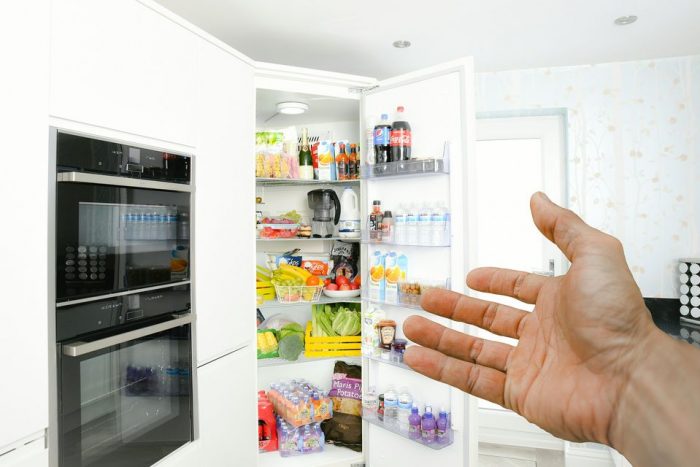11 Tips For Refrigerator Maintenance
Posted On July 14, 2021Refrigerators are hardworking appliances that run 24/7. But other than clearing out smelly food, how much time did you devote to refrigerator maintenance last year? If you want your fridge to live its entire life, typically 13 years, you need to show it some love and perform some simple maintenance tasks. Taking proper care of your refrigerator will ultimately lead to a longer shelf life benefitting you itself. So, here are some tips for refrigerator maintenance that should help you along.
1. Check The Door Seals
If your fridge has a loose seal it will allow cool air to flow out, which would waste energy and causing your fridge to work harder than it needs to. You have to make sure the door seals are tight and free of food remains. To ensure your seals are working properly, try doing the dollar-bill test: Close the dollar bill in the door so it’s half in and half out. If it slips out quickly, get the seals checked by your appliance repair in San Fernando valley.
2. Keep The Coils Clean
Condenser coils are used to get rid of the heat that is releases air from the inside to the outside. If these coils get covered in dust, then the refrigerator can’t run efficiently. It’s essential to clean coils twice a year by pulling the machine away from the wall, unplugging the fridge, and vacuuming them with a brush attachment.
3. Keep At The Right Temperature
The right temperature to keep the fridge is between 37 and 40 degrees Fahrenheit and the freezer at 0 degrees. Keeping it at the right temperature helps the fridge remain stable. Checking the interior temperature allows the refrigerator to operate at its best.
4. Fill It Up
Refrigerators need thermal mass to maintain their low temperatures. It needs the temperature to keep food and drinks cold. When the fridge doors open, cool foods and drinks absorb warm air, making your refrigerator work harder. If your fridge is usually empty or not full, fill it with empty bottles to help with the thermal mass.
5. Defrost
Defrosting is very important if and when the frost has accumulated on the inside walls of the freezer to a thickness of a one-half inch or so, you need to remove the food from the fridge and freezer, turn off the thermostat or unplug the unit, and allow all of the frost to melt. Once the ice has completely melted off, turn the fridge back on and wait for it to reach its proper temperature, and restock it with food.
6. Emergency Preparation
In case of an emergency if the power goes out, keep the doors closed and use food from the pantry. If a refrigerator is unopened it will keep food safe for four hours; a freezer will maintain its temperature for 48 hours if total and 24 hours if half-full.
7. Self-defrosting Fridge
If you have a self-defrosting refrigerator, you don’t need to do anything. Every six to eight hours, your refrigerator heats its cooling coils slightly to melt any frost accumulation on the coils. The resulting water drains into a shallow pan at the bottom of the refrigerator/freezer. Though the water evaporates, you’ll need to clean the pan to avoid odors and bacteria growth periodically.
8. Clean The Interior
Cleaning the shelves, doors, and walls of the refrigerator monthly can keep germs and bacteria from reaching the food. Use a cloth dampened by warm water to wipe down and remove crumbs and spills from shelves and walls. An all-purpose cleaner will make the job easier and take on stains and sticky spills without a lot of elbow grease. You can also use this cleaner on doors and handles. Use airtight containers to seal in odors and keep food fresher longer. If an item is weakly packaged or simply likely to leak, place it on a plate before storing.
9. Deodorize
Freshen and remove odors with a deodorizer that’s specifically designed for refrigerators. According to the manufacturer, this deodorizer is up to 50 times more effective than baking soda for eliminating food odors. It lasts up to six months.
10. Level It
Fridges that aren’t entirely level the side-to-side and back-to-front won’t permanently close properly, straining motors and causing condensation inside. To check, place a level on the top of the machine. Then rotate your machine’s adjustable feet until the fridge is level.
11. Replace Ice Maker And Water Filter
To ensure clean water and ice and to prevent clogs and leaks:
- Replace the water filter.
- Check your owner’s manual for the location of the filter and directions on how to pull it out.
- After you’ve popped in a new filter, run a couple of gallons of water through it to remove any carbon residue in the filter.
Following these tips and providing regular maintenance to your refrigerator will help avoid extra costs when you need repair and make sure that you don’t keep getting into problems. This is because the regular checkups would detect any issue right away and stop it before it.


